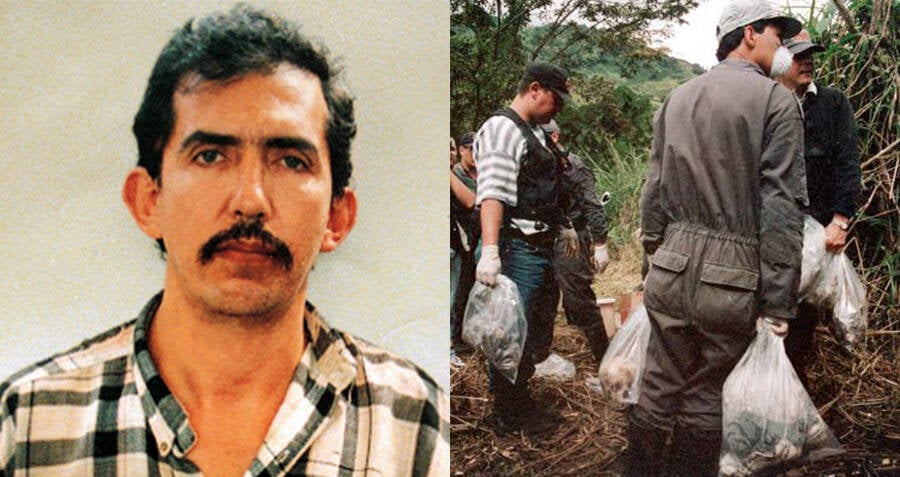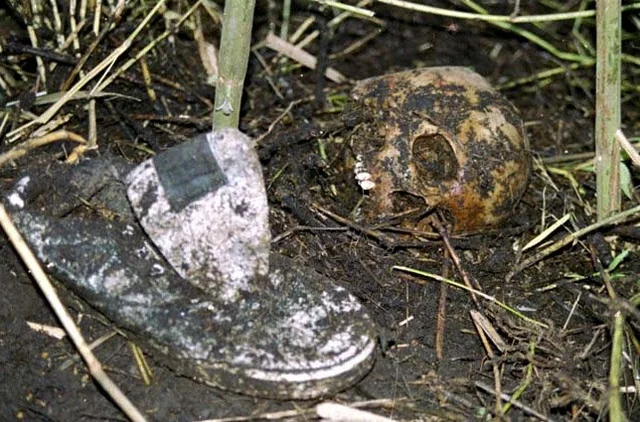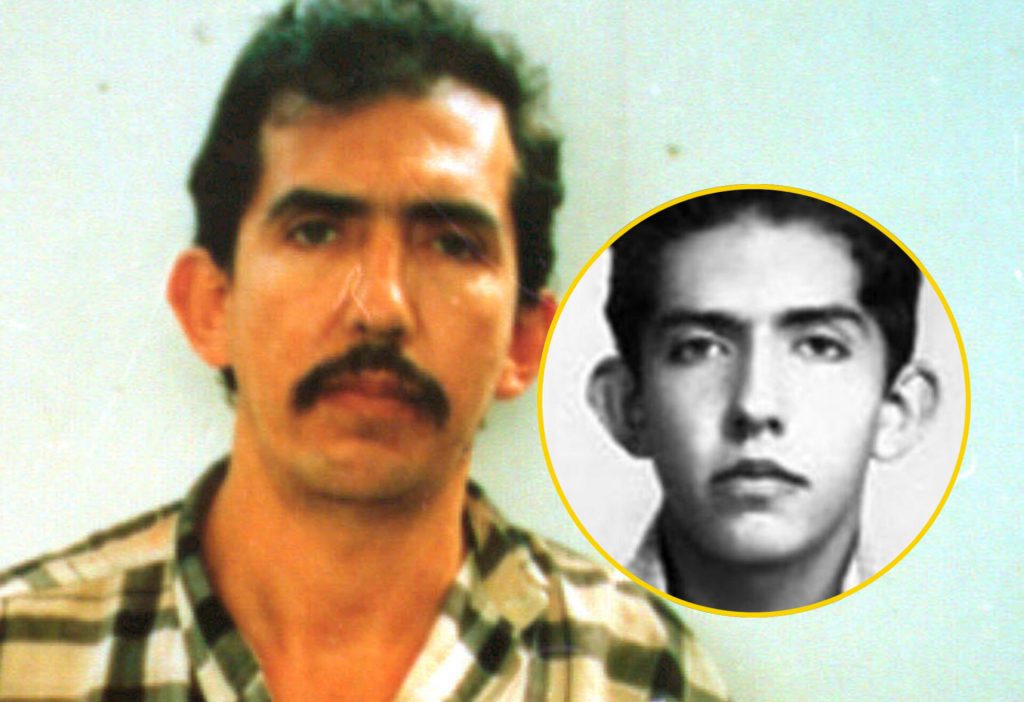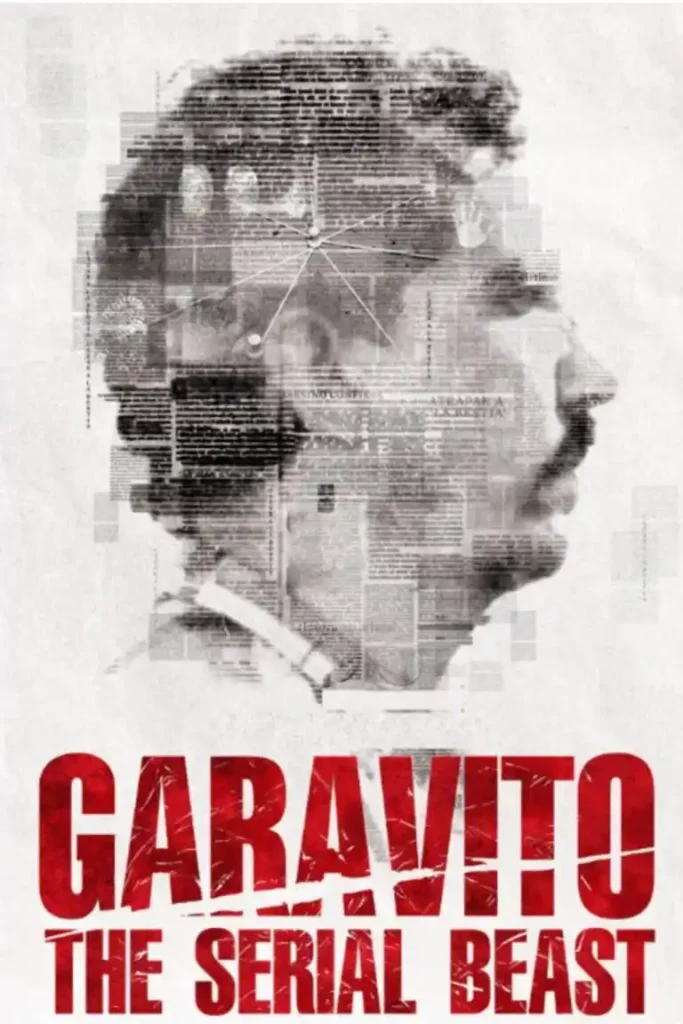In the annals of criminal history, few names evoke as much horror as Luis Alfredo Garavito. Known as “La Bestia,” or “The Beast,” Garavito’s reign of terror in Colombia marked him as one of the most prolific serial killers the world has ever seen. With over 189 victims, his gruesome crimes left an indelible scar on the nation. This article delves into the chilling story of Garavito, exploring the dark path that led him to become a monster and the subsequent investigation that finally brought him to justice.
Table of Contents
The Beast of Génova: Luis Alfredo Garavito

Luis Alfredo Garavito Cubillos, born on January 25, 1957, in the humble town of Génova, Colombia, was destined for a life stained by darkness. His childhood was a breeding ground for the horrors he would later inflict, a chilling tale of abuse and trauma that would scar him irrevocably.
Luis was the eldest of seven children, born into a family mired in poverty and dysfunction. His early years were marked by constant hardship and a pervasive sense of despair. The Garavito household was far from a haven; it was a battleground where violence reigned supreme. His father, a chronic alcoholic, ruled with an iron fist, subjecting young Luis to regular beatings that left both physical and emotional wounds. The young boy’s spirit was crushed under the weight of his father’s cruelty, leaving him with a deep-seated resentment and a thirst for revenge.
But the horrors of his childhood extended beyond the confines of his home. He also endured unspeakable abuse at the hands of two predatory neighbors. These men, taking advantage of his vulnerability, subjected him to repeated sexual assaults, further shattering his innocence and warping his perception of human interaction. The trauma inflicted upon him during these formative years would leave indelible scars on his psyche, planting the seeds of a monstrous transformation.
The cumulative effect of these early experiences was devastating. Luis’ childhood was a crucible of pain and suffering, forging a twisted worldview that blurred the lines between love and hate, pleasure and pain. The violence and abuse he endured robbed him of his innocence and left him with a profound sense of alienation and rage. These deep-seated psychological wounds would fester and grow, eventually metastasizing into a thirst for power and control that would manifest itself in the most horrific ways imaginable.
A Drifting Soul: Luis Alfredo Garavito’s Descent into Addiction and Isolation
As Luis transitioned into adulthood, the instability that had marked his childhood persisted, casting a long shadow over his life. He became a drifter, a restless soul who wandered from town to town, never finding a place to call home. His employment history was a patchwork of odd jobs, each one a temporary means to an end, a way to scrape by and fuel his growing addiction to alcohol.
Just like his father, Luis’ alcoholism was a demon that had haunted him since his youth, taking a firm grip on his life. He sought solace in the bottle, drowning his sorrows and numbing the pain that had become his constant companion. But the alcohol only served to amplify his inner turmoil, fueling his rage and exacerbating his already unstable mental state.
His nomadic existence and his descent into alcoholism created a dangerous cocktail of isolation and despair. He was a man adrift, cut off from the support of family and friends, lost in a haze of alcohol-induced oblivion. This isolation only served to further erode his already fragile sense of self, pushing him further down a path of self-destruction.
The combination of his rootlessness and his addiction made it difficult for him to form meaningful connections with others. He was a stranger in every town he passed through, a ghost haunting the fringes of society. His interactions with others were often fleeting and superficial, marked by a deep-seated distrust and a fear of intimacy.
As he drifted from place to place, his inner demons grew stronger, their whispers growing louder in his ears. The darkness that had taken root in his childhood continued to fester as he was a man on the edge, teetering on the precipice of a monstrous transformation.
The First Taste of Blood: The Murder of John Ivan Sabogal
The year was 1992, and Luis, driven by his inner demons and fueled by alcohol, would claim his first victim, marking the beginning of a horrific killing spree that would terrorize Colombia for years to come. The unsuspecting victim was a young boy named John Ivan Sabogal, a mere nine years old.
John Ivan was like many children in Colombia at the time, living in poverty and often roamed the streets, vulnerable to the predators that lurked in the shadows. Luis, a master manipulator, spotted the boy and lured him away with promises of candy and small change. Once they were alone, Luis’ true nature emerged. He brutally assaulted and strangled John Ivan before discarding his body in a field outside of town.
The discovery of his body sent shockwaves through the community. The police investigation, however, was hampered by a lack of resources and a prevailing apathy towards the plight of street children. John Ivan’s murder, like many others that would follow, was initially dismissed as a tragic accident or the result of gang violence. Luis was emboldened by his ability to evade capture, continued his reign of terror, leaving a trail of young victims in his wake.
The murder of John Ivan Sabogal marked a turning point in Luis’ life, a moment when his darkness fully consumed him. It was the first taste of blood for a predator who would go on to become one of the most notorious serial killers in history. The tragedy of John Ivan’s death, however, would be just the beginning of a much larger nightmare that would grip Colombia for years to come.
Luis Garavito’s Second Sacrifice: The Brutal Murder of Jhon Alexander Peñaranda in 1992
In 1992, Luis’ predatory instincts reached a horrifying crescendo, culminating in the brutal murder of his second known victim, Jhon Alexander Peñaranda. This heinous act, committed in Trujillo, marked a significant escalation in Luis’ pattern of violence, showcasing his increasing depravity and the depths of his sadistic tendencies.
Jhon Alexander was a 12-year-old boy who crossed paths with Luis while the latter was visiting his sister in Trujillo. Despite attempting to suppress his urges with alcohol, Luis’ inner demons proved too powerful to contain. Overcome by a fit of rage, he lashed out at a nearby liquor store, smashing bottles and creating a scene. It was during this chaotic episode that he encountered Jhon Alexander, a vulnerable child who became the target of his unbridled fury.
Luis lured the unsuspecting boy away from the safety of the streets, promising him a treat or a small reward. Once they were alone, his true nature emerged. He brutally assaulted Jhon Alexander, subjecting him to unspeakable acts of violence before ultimately taking his life. The details of the crime are gruesome, painting a chilling picture of Luis escalating sadism and his complete disregard for human life.
After the murder, he hastily disposed of Jhon Alexander’s body, leaving it in a hidden location. The boy’s disappearance initially went unnoticed, as he was just one of many children who had vanished without a trace in Colombia’s turbulent social landscape. However, Jhon Alexander’s murder would later become a crucial piece of evidence in the case against Luis, as investigators began to uncover the full extent of his horrific crimes.
The Predator’s Lure: Luis Garavito’s Dark Obsession with Innocent Prey”
As Luis’ inner torment intensified, a disturbing fascination with young boys began to take hold of his psyche. This dark obsession, fueled by his own childhood traumas and a twisted sense of power, would ultimately lead him down a path of unspeakable evil.
He found himself drawn to the innocence and vulnerability of young boys, typically between the ages of six and sixteen, children on the cusp of adolescence, their lives filled with dreams and aspirations that would never be realized. Their trusting nature and naivety made them easy targets for his predatory advances. He would often approach them in public places, parks, playgrounds, or busy streets, where their youthful energy and carefree demeanor masked the danger lurking beneath the surface.
Luis’ modus operandi was insidious, a carefully crafted facade of kindness and generosity. He would offer them small gifts, sweets, toys, or the promise of a few pesos, exploiting their economic hardships and their desire for simple pleasures. His words were honeyed, his smile disarming, as he lured them away from the safety of familiar surroundings and into his web of deceit.
Once he had gained their trust, Luis would lead his victims to secluded areas, far from prying eyes and potential witnesses. It was in these hidden corners of society that his true nature would emerge, as the mask of benevolence slipped away to reveal the monster lurking beneath.

The Moniker of a Monster: Luis Alfredo Garavito’s Transformation into “La Bestia”
The chilling nickname “La Bestia,” or “The Beast,” became synonymous with Luis, a moniker that perfectly encapsulated the monstrous nature of his crimes and the sheer terror he inflicted upon countless innocent children. This moniker was not bestowed upon him by a single individual or entity but rather emerged organically from the collective consciousness of a society grappling with the horrifying reality of his actions.
The origins of the nickname can be traced back to the media’s coverage of his crimes. As the details of his horrific acts of violence and depravity began to emerge, journalists and the public alike struggled to find words that could adequately describe the sheer brutality and inhumanity of his actions. The term “La Bestia” emerged as a way to capture the essence of his monstrous nature, a creature devoid of empathy or remorse, driven solely by a thirst for power and control.
The nickname quickly gained traction, becoming a chilling shorthand for the perpetrator of these unspeakable crimes. It was a label that evoked fear and revulsion, a reminder of the darkness that lurked beneath the surface of society. The media’s use of the moniker further cemented its association with Luis, as headlines screamed of “La Bestia’s” latest victims and the ongoing manhunt for the elusive killer.
The nickname also served as a powerful symbol of the collective trauma inflicted upon Colombian society by his crimes. It became a rallying cry for justice, a way for the public to express their outrage and demand accountability for the suffering of countless children. The Beast became a representation of the evil that lurked in the shadows, a reminder of the need to protect the most vulnerable members of society.
While the nickname “La Bestia” may have originated in the media, it quickly transcended its journalistic origins and became deeply ingrained in the public consciousness. It became a part of the national lexicon, a chilling reminder of the dark chapter in Colombia’s history that Luis’ crimes represented.
The Horrific Fate of Juan Sebastián Galvis: A Glimpse into Luis Garavito’s Depravity (1996)
In the annals of Luis’ reign of terror, the case of Juan Sebastián Galvis stands as a chilling testament to his unfathomable cruelty and the depths of his evil. This gruesome incident, which took place in Pereira in 1996, serves as a harrowing example of the suffering endured by his innocent victims.
Juan Sebastián, a bright and energetic 12-year-old boy, was last seen alive on a fateful afternoon while playing soccer with his friends near his home. He was approached by Luis, who, with his characteristic charm and deceit, lured the unsuspecting boy away with promises of a new soccer ball and a few pesos.
He led Juan Sebastián to a secluded area on the outskirts of town, where the true horror of his intentions unfolded. He subjected the young boy to unimaginable torture, inflicting physical and sexual abuse that lasted for hours. After satiating his sadistic desires, Luis brutally murdered Juan Sebastián, leaving his lifeless body in a shallow grave. He then attempted to conceal his crime by covering the grave with dirt and debris, hoping to erase any trace of his heinous act.
Juan Sebastián’s disappearance sparked a frantic search by his family and local authorities. However, their initial efforts were hampered by the lack of leads and the dismissive attitude of some officials, who attributed the boy’s disappearance to a simple case of running away.
It wasn’t until several days later that Juan Sebastián’s body was discovered by a local farmer who stumbled upon the shallow grave. The gruesome sight that awaited him was a testament to the depths of human wickedness, and it sent shockwaves through the community.
The police investigation that followed was hampered by the lack of forensic evidence and the absence of witnesses. However, the brutality of the crime and the victim’s young age galvanized the community, leading to a widespread outcry for justice.
Closing the Net: The Path to Garavito’s Arrest in 1999
The year 1999 marked a turning point in the pursuit of justice for the countless victims of Luis Garavito. A series of events and a growing mountain of evidence finally converged leading authorities to the doorstep of the elusive predator.
His relentless killing spree had left a trail of devastation across Colombia, but his ability to evade capture for so long was a testament to his cunning and the fragmented nature of law enforcement investigations. However, the tide began to turn when investigators noticed a disturbing pattern in the disappearances and murders of young boys throughout the country.
The bodies of numerous victims, often discovered in shallow graves or secluded areas, bore chilling similarities. They were often found naked, their bodies bearing signs of torture and sexual assault. The sheer brutality of the crimes and the alarming frequency with which they occurred raised alarm bells within law enforcement agencies.

As investigators delved deeper into the cases, they began to piece together a profile of the perpetrator. He was described as a charismatic and seemingly harmless man who often approached children in public places, luring them away with promises of gifts or money. This description, coupled with the geographic patterns of the crimes, led authorities to suspect that they were dealing with a serial predator.
A breakthrough came when a survivor of Luis’ attacks managed to escape his clutches and provide a detailed description of his assailant. This crucial information, combined with other witness accounts and forensic evidence, allowed investigators to create a composite sketch of the suspect.
The composite sketch was widely circulated, and it wasn’t long before a concerned citizen recognized the man in the picture as Luis. The informant contacted the authorities, providing them with crucial information about Luis’ whereabouts and his suspicious behavior.
Armed with this new information, the police launched a manhunt for Luis, and he was eventually apprehended on April 22, 1999, in Villavicencio, Colombia. During his arrest, investigators found in his possession a series of disturbing items, including photographs of his victims, detailed diaries describing his crimes, and a collection of personal belongings taken from the children he had murdered.

The Beast’s Reckoning: Luis Garavito’s Trial and Controversial Sentencing (1999)
In 1999, Luis Alfredo Garavito faced a reckoning for his heinous crimes against children in a trial that shocked the nation of Colombia and the world. The trial was a complex and emotionally charged affair, marked by Luis’ chilling confessions, the overwhelming evidence against him, and the public’s thirst for justice.
His trial began in the city of Tunja, where he was charged with the murder of 172 children. The courtroom was filled with a palpable sense of tension as the families of the victims, journalists, and legal observers gathered to witness the proceedings. The weight of the evidence against him was overwhelming, with forensic evidence, witness testimonies, and his own confessions painting a horrific picture of his crimes.
During the trial, Luis admitted to his crimes in chilling detail, recounting the torture, rape, and murder of countless children. His confessions were met with a mixture of horror, disbelief, and anger from those present in the courtroom. The families of the victims, who had long sought answers and justice, were finally confronted with the monster who had stolen their loved ones from them.
The trial lasted for several months, during which time Luis’ defense team attempted to portray him as mentally ill and unfit to stand trial. However, the prosecution presented compelling evidence of his sanity and his calculated actions, arguing that he was fully aware of the nature and consequences of his crimes.
In the end, the court found Luis guilty of 138 of the 172 murders he was charged with. He was sentenced to 1,853 years and 9 days in prison, the longest sentence ever handed down in Colombia. The sentence was seen as a victory for the families of the victims and a symbolic gesture of the nation’s condemnation of his crimes.
However, the victory was short-lived. Due to a legal technicality in Colombian law, which caps the maximum prison sentence at 40 years, Luis’ sentence was reduced to 22 years. This decision sparked outrage and protests across the country, with many feeling that justice had not been served.
The controversy surrounding his sentencing highlighted the shortcomings of the Colombian legal system and its inability to adequately punish the perpetrators of heinous crimes. It also raised questions about the effectiveness of the death penalty, which was abolished in Colombia in 1910.
Despite the reduced sentence, Luis’ trial and conviction marked a significant moment in Colombia’s history, exposing the dark underbelly of society, revealing the widespread poverty, violence, and neglect that made children vulnerable to predators like him.
Death of ‘La Bestia Killer’: Mixed Emotions and Lingering Questions
On October 12, 2023, the notorious Colombian serial killer Luis Garavito breathed his last in a hospital bed in Valledupar, Colombia. The man known as “La Bestia Killer,” whose reign of terror had left an indelible scar on the nation, succumbed to leukemia, a disease that had ravaged his body in his final years. His death marked the end of a long and painful chapter in Colombia’s history, one filled with unspeakable horrors and countless shattered lives.
The news of his passing was met with mixed reactions across the country. For some, particularly the families of his victims, his death brought a sense of closure, a finality to the nightmare that had haunted them for years. The monster who had stolen their children, their siblings, their loved ones, was finally gone, his reign of terror extinguished forever. There was a sense of relief, a feeling that justice, though delayed, had ultimately been served.
However, for others, Luis’ death in a hospital bed, rather than in a prison cell, left a bitter taste in their mouths. They questioned whether true justice had been achieved, considering the relatively short sentence he had served compared to the magnitude of his crimes. The fact that he had died of natural causes, rather than facing the full consequences of his actions, left some with a lingering sense of injustice.
Luis Garavito: Dark Legacy of One of the Worst Serial Killers of All Time
Luis Garavito’s case ignited a nationwide discourse on the urgent need for stricter laws to safeguard children and ensure the accountability of those who harm them. The case reopened old wounds, reigniting debates about the efficacy of the justice system in addressing such heinous crimes. It served as a chilling reminder of the ongoing necessity for vigilance in protecting the most vulnerable members of society from those who seek to exploit and abuse them. Amidst the darkness, however, Luis; case also became a testament to the resilience of the human spirit and the unwavering pursuit of justice, even in the face of unspeakable evil.
Additional ” Serial Killer” Crime Stories
- Serial Killers in the 1980s: A Dark Decade
- Todd Kohlhepp: The South Carolina Serial Killer and Real Estate Agent
- Top 10 Gay Serial Killers: The Dark Side of True Crime
- The Chilling Case of Ben Doberman, Serial Killer
Luis Garavito Documentary: Unveiling the Horrors of “The Beast”
A recent documentary titled “Garavito The Serial Beast” has shed light on the disturbing crimes of Luis Alfredo Garavito, a Colombian serial killer known as “La Bestia” or “The Beast.” This chilling series recounts the investigation that led to his capture and conviction, revealing the horrifying extent of his crimes against children.
A recent documentary titled “Garavito The Serial Beast” has shed light on the disturbing crimes of Luis Alfredo Garavito, a Colombian serial killer known as “La Bestia” or “The Beast.” This chilling series recounts the investigation that led to his capture and conviction, revealing the horrifying extent of his crimes against children.
The documentary details the painstaking efforts of investigators who pieced together the evidence from numerous crime scenes, ultimately leading to Luis’ arrest in 1999. Experts analyze Luis’ troubled childhood, marked by abuse and neglect, and examine the psychological factors that may have contributed to his horrific crimes. The series also explores the controversy surrounding Luis’ reduced sentence, which sparked outrage among the public and victims’ families.
Watch “Garavito: The Serial Beast”

We, the investigators who brought down Luis Alfredo Garavito, the most prolific child killer and rapist in history, share our firsthand accounts of the chilling investigation that exposed the Monster of Génova.
Read “Top Murder”

This true crime narrative delves into the societal, cultural, and psychological factors that create monsters, weaving together police reports, firsthand accounts, and psychological analyses to form a tapestry of terror and tragedy. A must-read for those fascinated by the darker aspects of human nature, this book offers a unique insight into the minds of South America’s most dangerous killers:
Luis Alfredo, Garavito Cubillos,
Florisvaldo de Oliveira
Pedro Rodrigues Filho
Pedro Lopez
Daniel Camargo Barbosa
FAQs
Did Garavito The Serial Beast get married?
No, Luis Alfredo Garavito did not get married. Throughout his life, there has been no record of him having a spouse or significant romantic relationships. His criminal activities and personal history were marked by extreme violence and deviance, making it highly unlikely that he led a conventional family life.
Why is the case of La Bestia Killer significant?
The case of Luis Garavito, “La Bestia Killer,” is significant because it highlights the deep flaws in the legal and social systems of the time. His crimes shocked the world and led to widespread changes in how serial killers are tracked and prosecuted in Colombia.
What happened to Luis Garavitos’ eye?
Garavito suffered from severe eye cancer and leukemia, which left him blind, weak and fatigued, requiring daily blood transfusions.